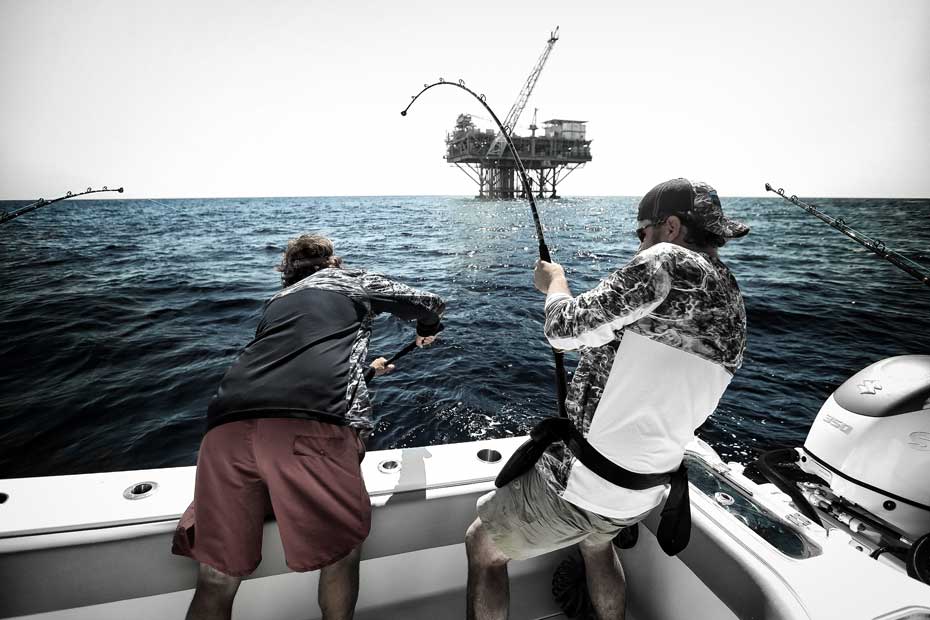
How to Catch Live Bait for Tuna
Mark Davis of BigWater Adventures is an accomplished saltwater fisherman. The first step to successful offshore fishing is catching live bait. If you’re fishing for yellowfin tuna, you need to know what they’re feeding on and how to locate and catch that bait. For bait fish like menhaden/pogies, you’ll need a cast net. For threadfin herring, use a sabiki rig, which is a multi-hook rig. First, learn how to throw a cast net. You’ll want a 12-14 foot, fast-sinking net. Look for schools of fish on top of the water or individual fish flicking on top of the water if the schools are deeper and cast your net there. To successfully catch tuna, know what bait they’re after and then go catch those bait fish.
For more on using live bait for tuna, check out this series of videos from Captain Kevin Beach.
Blue Water vs. Green Water
Where freshwater and saltwater come together, you can see a variety of colors and color changes in the water. River water is typically brown and when it slides across the top of the saltwater, it can create a variety of colors. As the freshwater begins to mix with the saltwater, you’ll see more green water and as it gets to blue water, you’re in the good offshore saltwater. There are more differences in this water besides color and type. There are oxygen, salinity, temperature, and visibility differences, which attract different types of fish. For the best offshore fishing, look for blue water.
Offshore Fishing | Locating and Fishing Rips, Weedlines and Color Changes
When you come across a distinct color change offshore, you’ll have different species of fish meeting there. There are different kinds of bait fish and predatory fish gathering there where temperature, current or color change holds those fish. It becomes a two-lane highway where predatory fish are looking for something to eat. If you’re fishing for those cobalt blue predators like blue marlin, yellowfin or wahoo, you want to troll just off the line between the two color changes.
Topwater Tuna Fishing Tip
It can take a lot of effort to throw topwater for tuna. One way to save some energy and use less effort is to throw it underhanded or backhanded like in tennis. Mark Davis has had a lot of success topwater fishing for tuna with the underhand throwing method as it takes less arm effort because it uses the entire upper body, helping you fish all day long. Mix up your throwing method and stay prepared for when that big tuna crushes your topwater bait.
Topwater Tuna Fishing Setup
One of the most important things to look at when setting up a casting rod and reel for tuna fishing is comfortability. You want a rod and reel combo that you can cast comfortably many times. Another thing to think about when setting up a casting rod and reel are its limitations and the size of the fish that you plan to catch with this setup. A good offshore casting setup is one that you can make multiple long range casts and effectively catch fish exceeding the 100-pound mark.
Best Way to Rig a Topwater | Topwater Tuna Fishing
There are many different ways to rig a topwater bait for tuna fishing. In general, you want a leader that connects to the main line and some type of swivel that connects the leader to the bait. One of the best ways to rig a topwater for tuna is to add a split o-ring to the leader connecting the leader to the bait. Adding a split o-ring to the swivel increases the overall action of the bait and makes the bait look more natural when you are fishing it.
Now you know how to bait and catch tuna. Next, you'll need to clean that tuna so that none of the delicious meat goes to waste. Here's how to clean and store your fresh-caught tuna.



























